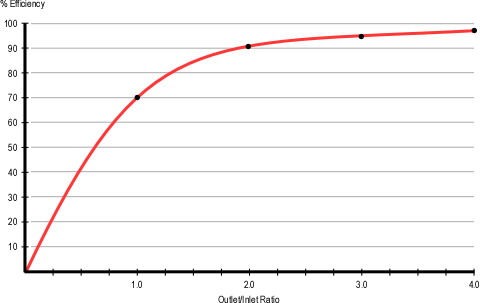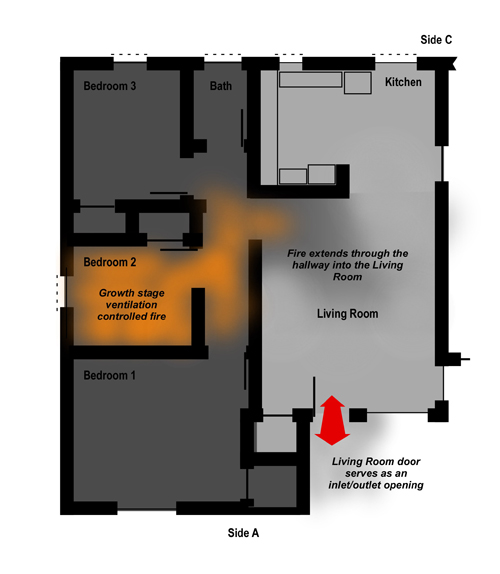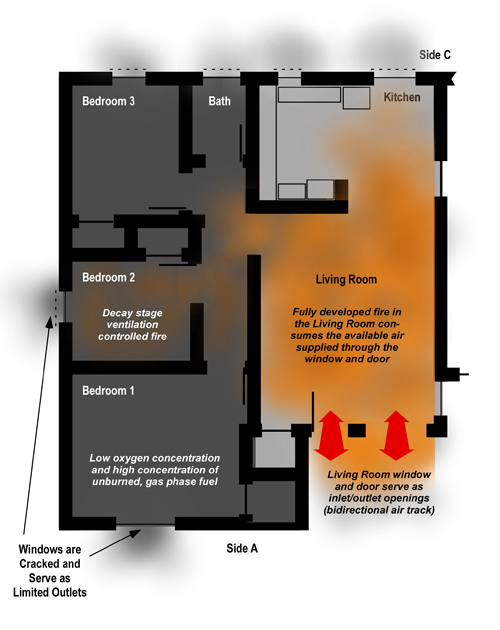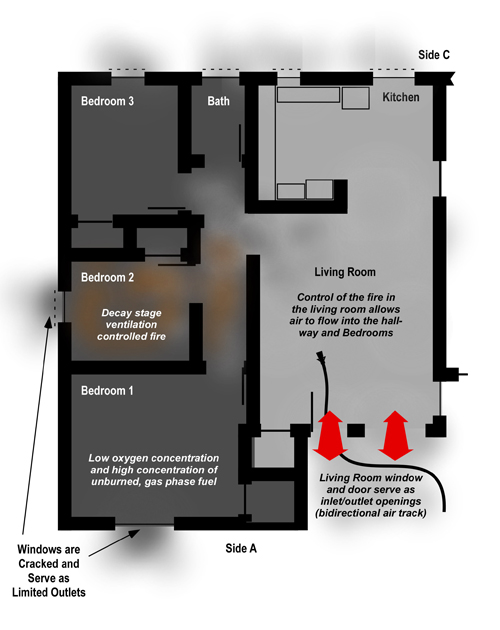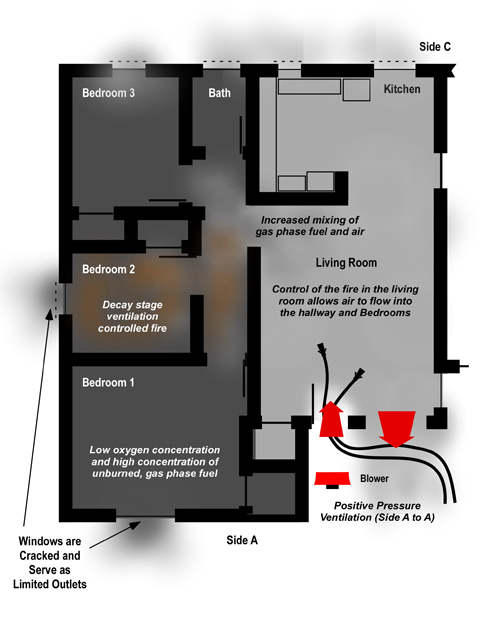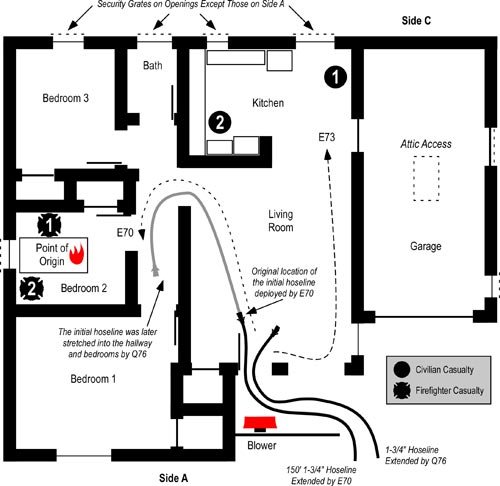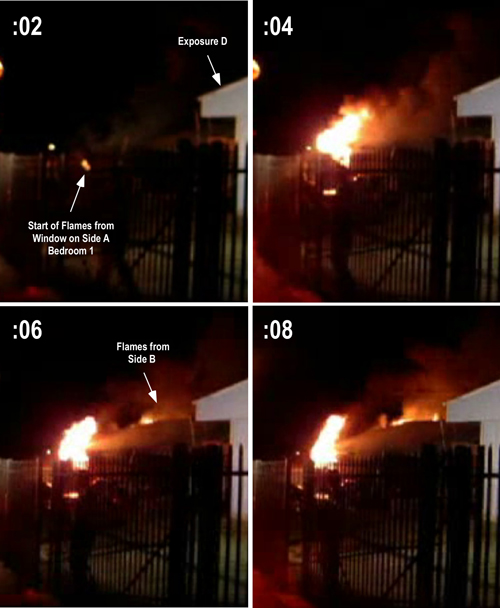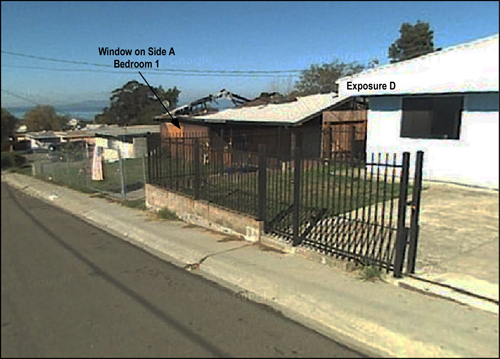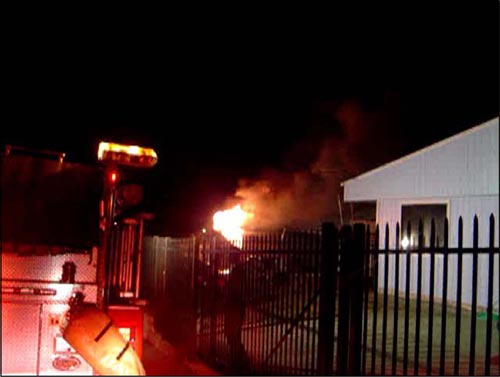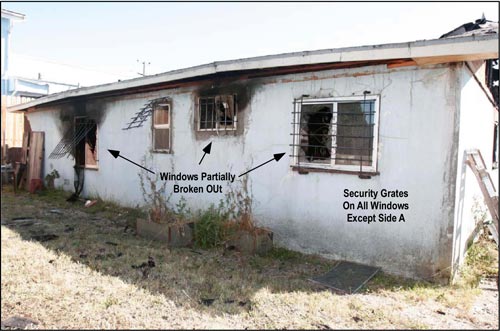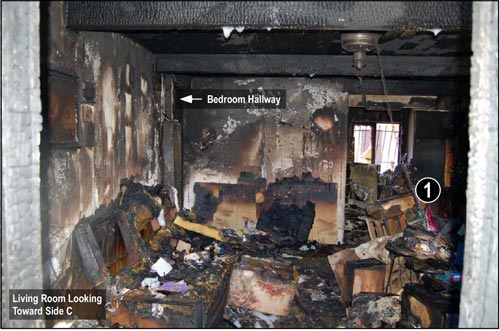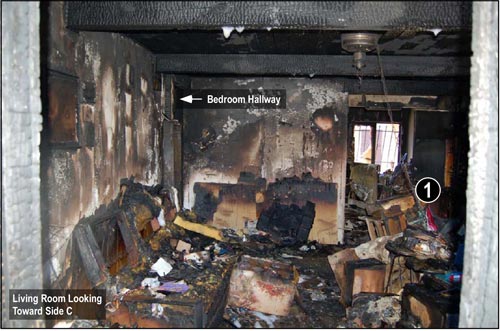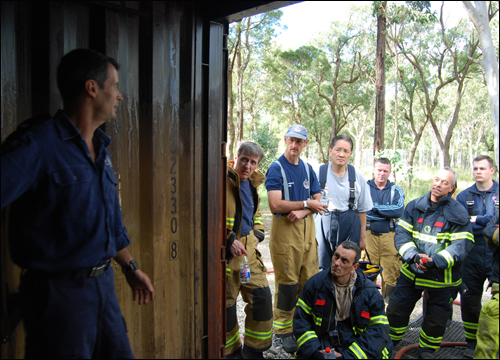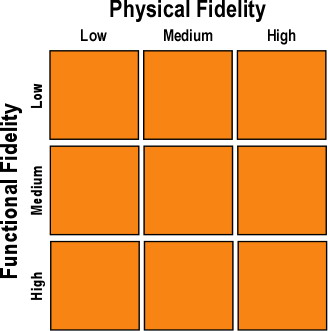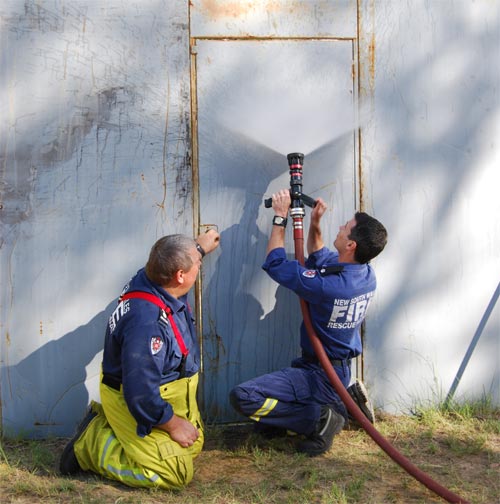Reading the Fire 7
Thursday, May 28th, 2009Application of the B-SAHF (Building, Smoke, Air Track, Heat, & Flame) organizing scheme for critical fire behavior indicators to photographs or video of structure fires provides an excellent opportunity to develop your knowledge of fire behavior and skill in reading the fire.
Residential Fire
Shortly after 1730 hours on May 19, 2008, companies from the Baltimore City Fire Department were dispatched for a residential fire at 321 S Calhoun Street. Responding companies observed a large column of smoke from several blocks away.
Download and print the B-SAHF Worksheet. Watch the first 60 seconds of the video clip. Consider the information provided in this segment of the video clip. First, describe what you observe in terms of the Building, Smoke, Air Track, Heat, and Flame Indicators and then answer the following five standard questions?
- What additional information would you like to have? How could you obtain it?
- What stage(s) of development is the fire likely to be in (incipient, growth, fully developed, or decay)?
- What burning regime is the fire in (fuel controlled or ventilation controlled)?
- What conditions would you expect to find inside this building?
- How would you expect the fire to develop over the next two to three minutes?
- Watch the next 60 seconds (first two minutes) of the video clip and consider the following questions:
- What changes in fire behavior indicators have you observed in the second 60 seconds?
Watch the remainder of the video and see if your assessment matches actual incident conditions. Additional video of this incident can be viewed on the WBAL-TV { http://www.wbaltv.com/video/19514614/index.html ] web site.

Remember the Past
As mentioned in earlier posts, I am involved in an ongoing project to assemble and examine narratives, incident reports, and investigations related to extreme fire behavior events. Unfortunately many of these documents relate to line of duty deaths. As I read through the narratives included in the United States Fire Administration line of duty death database and annual reports on firefighter fatalities, I realized that every week represents the anniversary of the death of one or more firefighters as a result of extreme fire behavior.
While some firefighters have heard about the incidents involving multiple fatalities, others have not and most do not know the stories of firefighters who died alone. In an effort to encourage us to remember the lessons of the past and continue our study of fire behavior, I will occasionally be including brief narratives and links to NIOSH Death in the Line of Duty reports and other documentation in my posts.
May 30, 1999
Firefighter Lewis Jefferson Matthews
Firefighter Anthony Sean Phillips, Sr.
District of Columbia Fire Department
District of Columbia Fire Department Firefighter Matthews and Firefighter Phillips were members of two different engine companies working on the first floor of a townhouse that was experiencing a fire. Both crews had entered the front door of the townhouse at street level. The fire was confined to the basement. The basement, at grade at the rear of the structure, was opened by a truck company and a small fire was observed. A company officer at the basement door requested permission to hit the fire but his request was denied by the incident commander since he knew that crews were in the building and he did not want to have an opposing hose stream situation. The fire grew rapidly and extended up the basement stairs into the living areas of the townhouse where Firefighter Matthews, Firefighter Phillips, and other firefighters were working. With the exception of Firefighter Matthews and Firefighter Phillips, all firefighters exited
the building after the progress of the fire made the living area of the townhouse untenable. On the exterior of the building, firefighters realized that Firefighter Matthews was not accounted for. Firefighters reentered the building and followed the sound of a PASS device. They removed the firefighter with the activated PASS to the exterior of the building. Once outside, firefighters realized that the firefighter who had been rescued was not Firefighter Matthews, but was, in fact, Firefighter Phillips. The search continued and Firefighter Matthews was discovered and removed approximately 4 minutes later. Firefighter Phillips’ PASS device was of the type that is automatically activated when the SCBA is activated and it worked properly. Firefighter Matthews’ PASS was a manually activated type and it was found in the “off” position. Both firefighters received immediate medical care on the scene and were transported rapidly to hospitals. Firefighter Phillips was pronounced dead upon arrival at the hospital and Firefighter Matthews died the following day, May 31, 1999. Firefighter Phillips died as the result of burns over 60 percent of his body surface area and his airway. Firefighter Matthews died as the result of burns over 90 percent of his body surface area and his airway. 2 other firefighters were injured fighting the fire. One (1) of these 2 firefighters, who suffered burns over 60 percent of his body surface area, survived and was released from the hospital in late August. At the time of his release, it was not clear if this firefighter would ever return to work. Additional information about this incident can be found in NIOSH Fire Fighter Fatality Investigation 99-F-21 and National Institute for Standards and Technology (NIST) report Simulation of the Dynamics of the Fire at 3146 Cherry Road NE, Washington D.C., May 30, 1999.
May 9, 2001
Firefighter Alberto Tirado
Passaic Fire Department, New Jersey
Firefighter Tirado and members of his department were dispatched to a report of a fire in an occupied three-story apartment building. The first-arriving engine company reported a working fire and Firefighter Tirado responded as the tiller driver of the first-arriving ladder company.
Firefighters on-scene received reports that children were trapped in the building. Firefighter Tirado and another firefighter from his company proceeded to the second floor of the building to conduct a search. A search of the second floor was conducted and all of the apartments on that floor were found to be clear. Firefighter Tirado and the other firefighter proceeded to the third floor to continue their search. On their way to the third floor, the team encountered heavy smoke and high heat. Both firefighters went back to the second-story landing. Firefighter Tirado’s partner told Firefighter Tirado to wait on the landing while he retrieved additional lighting from the apparatus.
A few minutes later, Firefighter Tirado called on the radio and said that he was trapped on the third floor. This transmission was not heard on the fireground and a second request for help was also not heard. He called a third time and reported that he was trapped on the third floor and needed help. Firefighter Tirado’s exit path had been blocked by fire, and he was unable to find his way out.
A defective throttle on the pumper supplying the initial attack line created water supply and pressure problems. Firefighters were unable to advance to the third floor to rescue Firefighter Tirado. The fire on the third floor grew to a point where it was impossible for firefighters to control it with handlines. An aerial master stream was used to darken down the fire and allow firefighters to access the third floor. After a number of attempts, Firefighter Tirado was discovered in a third-story bedroom.
The cause of death was listed as asphyxiation. Firefighter Tirado’s carboxyhemoglobin level was found to be 65%. The fire was caused by an unsupervised 12 year old girl that was attempting to light a stove. The children that were reported trapped were actually out of the building.
For additional information on this incident, refer to NIOSH Fire Fighter Fatality Investigation F2001-18.
Ed Hartin, MS, EFO, MIFireE, CFO



